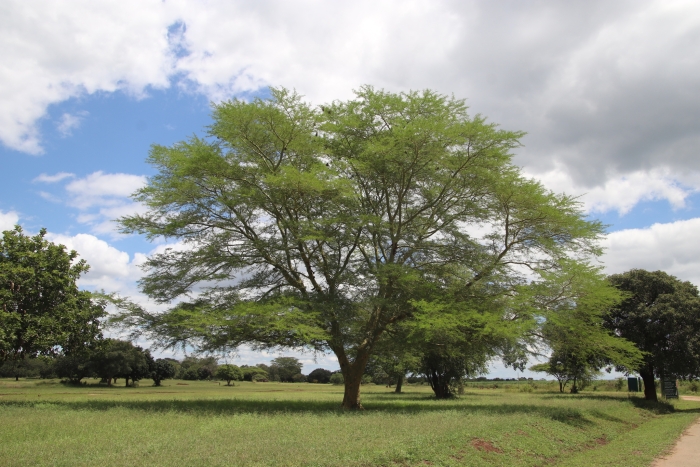Fever Tree
(Vachellia xanthophloea)
Fever Tree (Vachellia xanthophloea)
/
/

Tony Rebelo
CC BY-SA 4.0
Image By:
Tony Rebelo
Recorded By:
Copyright:
CC BY-SA 4.0
Copyright Notice:
Photo by: Tony Rebelo | License Type: CC BY-SA 4.0 | License URL: http://creativecommons.org/licenses/by-sa/4.0/ | Rights Holder: Tony Rebelo | Publisher: iNaturalist | Date Created: 2020-02-25T12:27:43-08:00 |
















Estimated Native Range
Summary
Acacia xanthophloea, commonly known as the fever tree, is a deciduous tree native to open woodland and savanna near swamps, riverine forests, and seasonally flooded areas in eastern and southern Africa. It is characterized by its striking smooth, powdery, greenish-yellow bark that contrasts with new purple twigs. This tree can grow to a height of 49-82 feet (15-25 meters) and is notable for its twice-compound leaves, sharp white spines, and scented pale cream flowers that bloom in early spring. The fever tree’s flowers are not particularly showy but are valued for their fragrance and the nectar they provide to bees and other pollinators.
In cultivation, Acacia xanthophloea is often used as a feature or shade tree in large landscapes due to its unique bark and overall architectural form. It is also planted for its ability to thrive in wet conditions, making it suitable for riparian plantings. The fever tree requires full sun and can tolerate a range of soil types, provided they are well-drained. It is relatively low-maintenance once established but may require additional water during prolonged dry periods. Gardeners should be aware that Vachellia xanthophloea is potentially invasive in some regions outside its native range and should consult local guidelines before planting.CC BY-SA 4.0
In cultivation, Acacia xanthophloea is often used as a feature or shade tree in large landscapes due to its unique bark and overall architectural form. It is also planted for its ability to thrive in wet conditions, making it suitable for riparian plantings. The fever tree requires full sun and can tolerate a range of soil types, provided they are well-drained. It is relatively low-maintenance once established but may require additional water during prolonged dry periods. Gardeners should be aware that Vachellia xanthophloea is potentially invasive in some regions outside its native range and should consult local guidelines before planting.CC BY-SA 4.0
Plant Description
- Plant Type: Tree
- Height: 15-25 feet
- Width: 10-15 feet
- Growth Rate: Moderate
- Flower Color: Cream, Yellow
- Flowering Season: Spring
- Leaf Retention: Semi-deciduous
Growth Requirements
- Sun: Full Sun
- Water: Medium
- Drainage: Medium
Common Uses
Bird Garden, Low Maintenance
Natural Habitat
Open woodland and savanna near swamps, riverine forests, and seasonally flooded areas
Other Names
Common Names: Yellow Fever Tree, Yellow-barked Acacia, African Fever Tree
Scientific Names: , Vachellia xanthophloea, Acacia songwensis, Acacia xanthophloea, Vachellia xanthophloea,
GBIF Accepted Name: